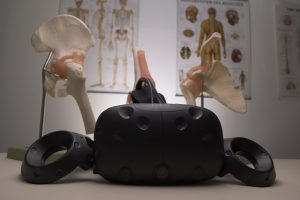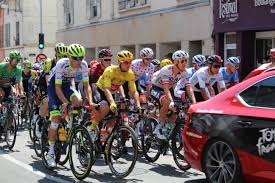By Caroline Heaney
Recently, The Independent reported that professional football clubs are failing to provide injured players with the psychological support they need (Lovett, 2019). The psychological impact of sport injury is well documented – for example, the IOC consensus statement on mental health in elite athletes (Reardon et al., 2019) recognises that sport injury can have a significant impact on mental health, and several sportsmen and women (e.g. footballer Danny Rose) have cited injury as a trigger for mental health difficulties. So why is it that the psychological aspects of sport injury are being ignored in professional football?
The article in The Independent, which explored a study conducted by Dr Misia Gervis, pointed towards a lack of education and training amongst medical staff treating injured players – an area that I have researched extensively with my colleagues at The Open University. My early work in this area (Heaney, 2006) investigated the attitudes and perceptions of physiotherapists working in professional football and identified that whilst physiotherapists recognised that injury had a psychological impact they largely did not have the education or training to be able to respond effectively. This was supported by our 2012 investigation into physiotherapy education in the UK (Heaney et al., 2012) which revealed great diversity in the provision of psychology education in physiotherapy programmes and an inconsistency between the reported importance of psychology and the demonstrated importance of psychology through its visibility within the curriculum.
These findings indicate that UK physiotherapy training does not adequately prepare sports medicine staff for dealing with the psychological aspects of sport injury and that training in this area would be beneficial, but is this the case? To answer this question we conducted two further studies. The first (Heaney et al., 2017a) examined the sport psychology related attitudes and behaviours of ninety-four qualified sports injury rehabilitation professionals (physiotherapists and sports therapists) working in sport. These professionals were split into two groups – those who had been exposed to education on the psychological aspects of sport injury as part of their undergraduate or postgraduate studies and those who had not. It was found that those who had studied the psychological aspects of sport injury integrated significantly more sport psychology into their practice and referred more athletes to sport psychologists for further support than those who had not.
The findings of this study suggest that sport psychology education is beneficial to sport injury rehabilitation professionals and the athletes they treat, but what about the professionals who aren’t lucky enough to receive sport injury psychology education as part of their undergraduate or postgraduate training? How can they access the benefits of sport injury psychology education? We wanted to know whether post-qualification continuing professional development (CPD) training on the topic can derive the same benefits and so we conducted a further study (Heaney et al., 2017b) exploring the impact of an online sport injury psychology education module on the attitudes and behaviours of ninety-five physiotherapists working in sport who had not been exposed to sport psychology education as part of their undergraduate or postgraduate training. The physiotherapists were randomly assigned to either an intervention group who studied an online CPD module titled ‘sport psychology for physiotherapists’ or a control group who studied an equivalent online CPD module on strength and conditioning which had no psychology content. Physiotherapists working in sport tend to be busy professionals who work unsociable hours and travel a lot (e.g. traveling to competitions across the country or the world) and therefore it was important that the CPD module was flexible, accessible and of a duration that would promote adherence. Consequently, an online format was adopted with a study duration of approximately 12 hours. The ‘sport psychology for physiotherapists’ module covered three main areas – (1) understanding the psychological impact of sport injury, (2) psychological skills and techniques for injured athletes, and (3) referral and professional boundaries. Attitudes and behaviours towards sport psychology were measured before the module and at three points after the module had been completed (immediately, 3 months and 6 months after). It was found that those who had studied the sport psychology module demonstrated an improvement in their attitudes towards sport psychology immediately following its completion that was significantly higher than those who had studied the control module. Use of sport psychology also increased following the sport psychology module, with significant differences seen between the intervention and control group indicating that those who had studied the sport psychology module were integrating more sport psychology techniques into their practice than those who had studied the control module.
The findings of this study indicated that CPD courses can address the limitations that some physiotherapists and other members of the sports medicine team have in their understanding of the psychological aspects of sport injury, but it also uncovered another issue – a distinct lack of CPD offerings in this area in the UK. We have sought to address this by developing a free Badged Open Course Exploring the psychological aspects of sport injury, which we hope will contribute to bridging the gap, but more still needs to be done to ensure that sport psychology is properly integrated into undergraduate and postgraduate training so that injured players get both the physical and psychological support they need during sport injury.
Its not all doom and gloom when it comes to this topic and its important to note that some professional football clubs do utilise sport injury protocols that integrate psychological factors and use multidisciplinary sports medicine teams that include sport psychologists to support the injured athlete. Indeed, The Independent article gives the example of Queens Park Rangers where sport psychology is firmly embedded within the treatment room. Dr Misia Gervis suggests that for this to become more commonplace “a cultural shift of practice is needed by medics, physios and coaches.” It is my belief that educating sports medicine professionals is the first and key step to enabling this cultural shift.
********************************************************************************
Please watch the video to find out more about the free Badged Open Course (BOC) Exploring the Psychological Aspects of Sport Injury
********************************************************************************








